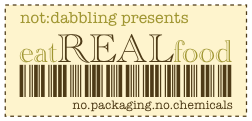There are many joys in community gardening. I’ve run out of fingers, toes, the fingers and toes of my family, and of my friends, to count the amazing people I’ve met since I started gardening in a community, instead of just in my own backyard.
Sometimes when I’m feeling overwhelmed, or lonely, I hop on my bike, or into my car, and head over to a Peterson Garden Project site, or one of the many other nearby community gardens, and just walk around, looking at everyone’s garden. Sometimes I’ll talk to the rare gardener there in the middle of the day, but sometimes I just like to look at the swelling zucchini, or count the pollinators, or listen to the breeze blowing through the greenery.
Community gardening also brings its hazards, of course. If your neighbor has a bug, chances are you’ll get it, too. Gossip can start to coalesce, not around “did you hear what Mary did?” so much as “oh dear lord, look at this new garden pest I just found out about—let’s look for it!”
And I want to say, stop.
Not every bug in an organic garden is a pest. Not every pest will kill your plant. Not every lost plant is a disaster. Not every neighbor will take care of his plot like you would; not every lost plant is someone else’s fault (or anyone’s “fault”).
By focusing on what can go wrong, you’ll start looking for what can go wrong. I get a lot of calls asking me to look at a plant that the gardener is convinced is on the way out.
And what I find is a fundamentally healthy plant, maybe with a case of the sniffles.
Last year, I lost all the tomatoes in the 7 plots I was caring for on behalf of Peterson’s Grow2Give™ plots. Every. Tomato. Plant. I felt really bad. But in their place I planted kale and beans and herbs, and ended with a giant harvest for our food pantry partners. It was just a different harvest than the one I originally planned.
Before I started community gardening, I barely thought about pests at all. After I started community gardening, I’ve been fascinated at the complex ecosystems that spring up where formerly there was a slab of weedy concrete.
And that includes the pests—the aphids on the corn, being assiduously farmed by ants. The blossom end rot that kills your tomato harvest. The scary wasps and hornets (which by the way, are eating the Japanese and corn worm beetles). Even the rabbits, yes alright even the rabbits, which are eating the beans, but also depositing lovely herbivore manure.
The biggest pest is not the beetle, or the larva, or even the $@($&*# rabbits. The biggest pest is the gardener who can’t see past the hazards. So chill. Stick your hands in the soil. Remember that there is no problem that can’t be mitigated. Remember that the apocalypse has not come yet, so there’s still a grocery store if one of your plants dies. Think of the pests and failures as knowledge building, not as gardening failed.
Focus on the positive, and the joy in gardening, or you’ll never go the distance.
Do you have space in a community or allotment garden? How do you handle the negativity?



























